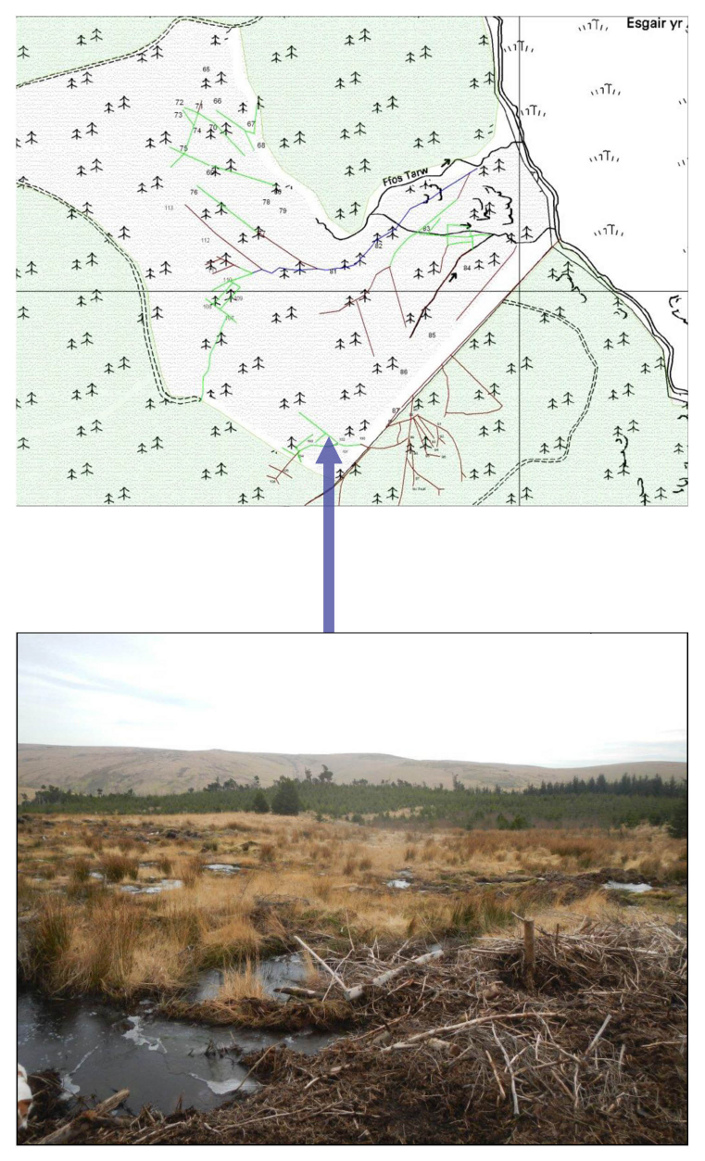Procurement of Management Rights within Forestry Areas
Area Controlled by National Resource Wales (NRW)
During 2011 adequate permissions to complete the project were secured within the area of public forest. These were secured by a signed Memorandum of Agreement between the Forestry Commission Wales (now NRW) and WUF. This committed the Forestry Commission Wales (FCW) to blocking up the drainage within the sections already clear and those that were to be cleared within the duration of the project at the project's cost. There was no commitment to block and set aside the sources that were to be cleared after 2013.
Further, we received the following from FCW in January 2013:
"4. All of the HSAs, including those under crops not yet clearfelled, have been permanently identified in our GIS system with the following text: "This is a hydrological source area identified by the Wye & Usk Foundation. Once planted crops have been felled, we have committed to block drains within this area and not to prep or plant. While we have not committed to clear regeneration to maintain this as an open area in perpetuity, doing so may be in keeping with our own water management objectives."
5. A significant area of north east Tywi has been identified as one of ten priority sites in Wales for restoration of afforested deep peat, which may lead to further open habitat restoration around the HSAs identified by the Wye & Usk Foundation; for further information please go to http://www.forestry.gov.uk/forestry/INFD-8YYJSU."
Area controlled by Private Interests.
During 2012 the Nant-yr-Hwch Forest Estate which includes the sources of the Nant Hir and Nant Byr was put up for sale. Further, the forest manager for Scottish Woodlands who own the trees had a serious injury and was incapacitated for 6 months. In this context the existing interests were not prepared to commit to any agreement. In January 2013 Nant-yr-Hwch was sold. We have started negations with the new owner to move the areas designated not to be planted and so by recover the sources of theses 2 problematic streams.
5.1.7 C1 Restoration of 10 hydrological sources within Irfon catchment
In March 2012 FCW appointed contractors and we agreed to start on the 18th April. On the 17th of April a major low pressure system deposited over 50mm of rain, saturating the bogs. The work was initially postponed for a week but it rained regularly until the 13th July.
By the 24th July the rivers were dropping back to summer levels and WUF approached FCW to start work.
On the 2nd of August work started but was abandoned after 2hrs due to the slow pace (1 dam built in 2hrs) and the damage that the swing shovel was doing. Given the short timescale it was decided to modify a forwarder and use its extra reach to access the drains from the post- harvest brash mats. This modification was completed in late August and after a break in the weather in early September and resultant improvement in ground conditions, work started on the 18th September. On the 10th October, after a couple of the worst downpours of the year we stopped field work for the year.
In this period all the drainage within the hydrological sources at the top of the Tawr and one in the Twlc were blocked with peat dams.
A site visit in January 2013 found that more than 90% of the dams were still functioning and that the water table had been raised markedly. This is the top of the Tawr this February. Note the dam on the far right of the picture and the frozen pools of water in the restored source.
Drainage within the Ffos Tawr subcatchment. Drains marked green were blocked in September 2012

